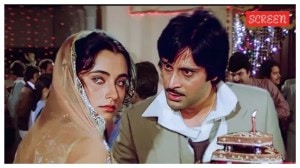On the wrong track?
Indian cricket,in general,has an unusually strong affinity for pitch-gazing on the eve of a Test,and the attention given to the playing surface by our national team is far greater than any other side in the world.
Its that time of the year when winter is creeping up on North India in stops and starts chilly one day,temperate the next making it hard to determine how many woollens one should wear before stepping out.
On Sunday afternoon,some of the onlookers had over-budgeted while others had been foolhardy. A confluence of sweaty tweed jackets,jumpers tied around waists,and shivering striped t-shirts greeted the Indian team during their first practice session ahead of the second Test against Sri Lanka starting on Tuesday.
But Mahendra Singh Dhonis boys got only moderate attention from the hundreds who had gathered at the ground rather peacefully,as if toning down their usual boisterous obsession to match the pace of crickets five-day format. Not too many eyes were trained at the squad practicing in the nets in one corner,and even less at Sachin Tendulkar,getting endless throw-downs from coach Gary Kirsten,in another.
Ruling the roost on the day,partly because of the last match in Ahmedabad and partly because of recent history,was the dual-coloured 22-yard strip in the middle of the once-glorious Green Park Stadium.
Everyone in the vicinity of the pitch had either an opinion on its nature,or an anecdote about it from the years gone by. There were reminders of how the wicket for this Test hadnt been used for an international match in decades,and how it was the one on which Malcolm Marshall had made Sunil Gavaskar drop his bat with a bouncer in 1983.
There were detailed analyses of how its greenish tinge was only a mirage,and an oasis of runs lay hidden underneath. Then,there were views that the grass on the surface would be uprooted on the eve of the match,leaving nothing more than an inert replica of the track provided for the first Test.
Cynosure of all eyes
Indian cricket,in general,has an unusually strong affinity for pitch-gazing on the eve of a Test,and the attention given to the playing surface by our national team is far greater than any other side in the world. Too often,the track becomes so fascinating that team composition and strategy start to appear irrelevant in comparison. On Sunday,that feeling was even more pronounced because of the circumstances.
The groundsmen in Kanpur are facing a Catch 22 situation this week. On one hand is the severe criticism the Ahmedabad wicket received for its placid nature,and on the other is the two-fold problem of an ICC censure after turning out a minefield against South Africa in 2008 and the strong slow-bowling attack that the Sri Lankans boast of.
Scared of being targeted either way,the establishment is trying to put up a brave face in this heads-I-lose-tails-you-win situation.
Curator Shiv Kumar waxed eloquent about the sporting nature of the track he had prepared how it would seam early,be batsman friendly midway,and a delight for spinners by the time the Test neared the end of its full five days. Such words of foresight have been spoken so many times before that he neednt have said anything at all.
Selection conundrum
Meanwhile,apart from the fresh band of green grass outside off-stump and the hard cracks under the fuzz,there are other pressing problems for the two teams to sort out many of which will begin in the team selection meetings on the eve of the game (to play Pragyan Ojha and Ajantha Mendis or not?) and will then spill over to how they implement their plans once the Test begins.
At Motera,the first hour of play was at least mildly fruitful for pacemen who were willing to give something extra India lost wickets early on the first and second days,and Zaheer Khan was more unlucky than unable on the third and fourth.
In Kanpur,with dew in the mornings and a nip in the air,the first sessions are certain to be more challenging,if the bowlers (and not the groundsmen) pitch it right.
Photos



- 01
- 02
- 03
- 04
- 05



























